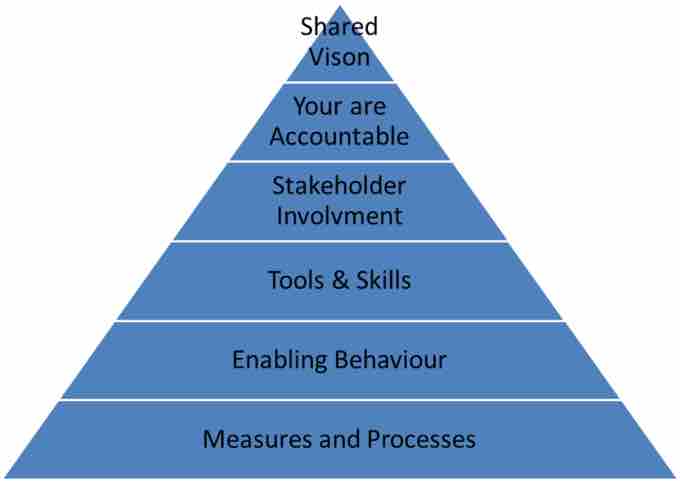Decision Making
Steps in the decision making process include:
- Objectives must first be established.
- Objectives must be classified and placed in order of importance.
- Alternative actions must be developed.
- The alternatives must be evaluated against all the objectives.
- The alternative that is able to achieve all the objectives is the tentative decision.
- The tentative decision is evaluated for more possible consequences.
The decisive actions are taken, and additional actions are taken to prevent any adverse consequences from becoming problems and starting both systems (problem analysis and decision making) all over again . There are steps that are generally followed that result in a decision model that can be used to determine an optimal production plan. In a situation featuring conflict, role-playing is helpful for predicting decisions to be made by the parties involved.

SYSTEM
The SYSTEM pyramid explains the key leadership attributes for strategic thinking.
Decision Planning
Making a decision without planning is fairly common, but does not often end well. Planning allows for decisions to be made comfortably and in an intelligent way. Planning also simplifies the decision-making process. Any decision will get four benefits out of planning:
- Planning establishes independent goals. It is a conscious and directed series of choices.
- Planning provides a standard of measurement. It is a measurement of whether you are going toward or further away from your goal.
- Planning converts values to action. You think twice about the plan and decide what will help advance your plan best.
- Planning allows for limited resources to be committed in an orderly way. Always govern the use of what is limited to you (e.g., money, time, and so on).